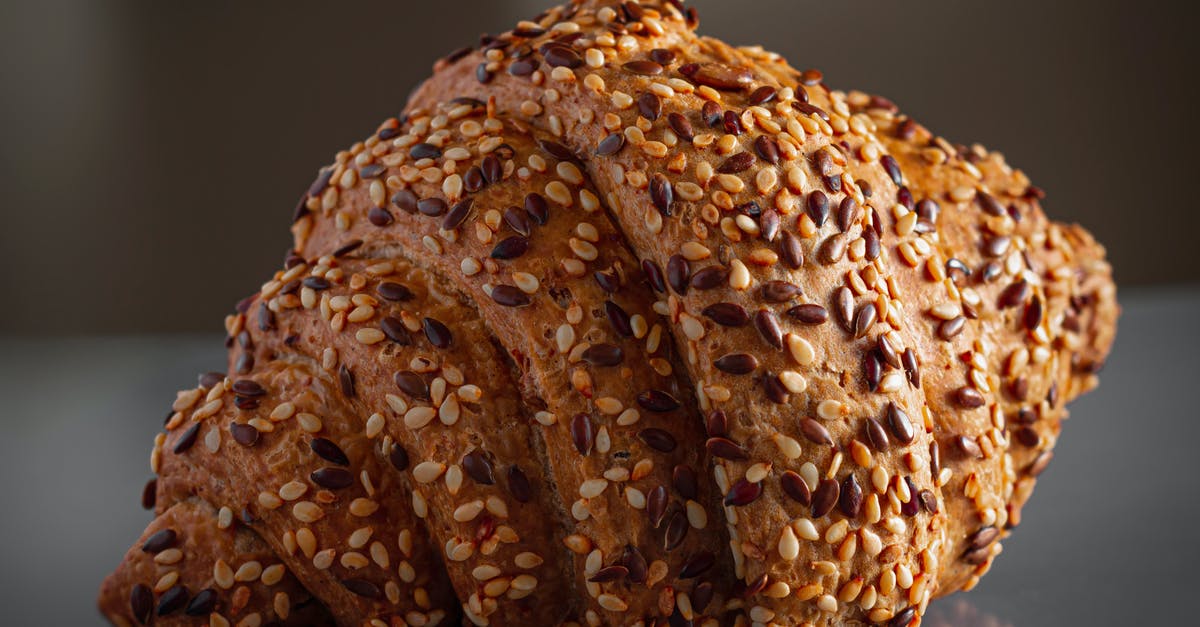Why is this croissant dough not behaving as expected?

I followed this video recipe for croissants, but whereas the video shows a soft, silky dough that proofs beautifully, I ended up with a dense, dry dough that has not risen appreciably after 90 min. I measured with a scale and proofed the dough in a warm environment, so I'm confident that neither of those is the problem. I did substitute dry yeast for fresh, but I also used yeast from the same package to make bread just the other day, so I'm confident that the yeast is healthy and active. What else could be going on?
1. Recipe
- 500g flour
- 70g sugar
- 10g salt
- 20g fresh yeast (which I converted to 8g dry yeast according to a website that claimed the correct multiplier is 0.4)
- 125g water
- 125g milk
- 350g butter
Combine dry ingredients; combine water, milk, & yeast; combine the two mixtures; knead in stand mixer 12 min.; proof until doubled in volume...
Obviously the recipe goes on from there, but that's the relevant part.
2. Further details
- I did use a scale.
- I have not verified the accuracy of the scale.
- I proofed the dough in the oven, with the light on. I did not measure the temperature in there, but I'm going to say 30C/85F.
- I proofed the dough for 90 min.
Best Answer
I am afraid that you will never know the answer. At least, from your description, there is no obvious cause for failure, and there is just no way to guess what exactly went wrong this one time. The recipe and your process seem fine and should work in principle.
Typical causes can be:
- You didn't wait enough. You say you only waited for 90 minutes - yeast doughs can easily need more, and I would wait for at least 6-8 hours before I pronounce a yeast dough dead. While this shouldn't be the case at 30 C, your estimation for your oven's temperature at this setting might be wrong. Or maybe the dial was visibly turned to this setting, but due to some mechanical problem, the oven didn't actually turn on.
- The opposite of my last sentence may have happened - maybe the oven turned on to one setting higher, and you warmed the dough enough to kill the yeast.
- You may have been distracted and made a wrong measurement without noticing.
If you are accustomed to high-hydration doughs, then this dough can be expected to feel on the dry side for you, it is at 60% hydration. Or maybe the original recipe assumes that people will proof the live yeast in some water additionally to what the recipe calls for.
The "stiff" part is likely because you apparently kneaded it for exactly one interval of 12 minutes with a stand mixer. You should have let it relax when you saw it becoming stiff. Also, consider transitioning from kneading for some amount of time to recognizing what properly kneaded dough looks like and stopping when it's done.
Anyway, neither the low hydration nor the unrelaxed gluten should interfere with rising. You eithr made a mistake (wrong measurement, wrong temperature or waited too short a time as explained above) or it was some weird fluke, these happen too.
Pictures about "Why is this croissant dough not behaving as expected?"



Why is my croissant dough not rolling out?
Keep a Close Eye on Dough Temperature.If your croissant dough gets too cold, it can be difficult to roll, and the butter layers inside can break apart and become brittle, which will impede the development of flaky layers in the finished croissant.Why did my croissants fail?
Your croissants were probably under-proofed. Just let them proof a bit longer so they get wobbly and increase visually in size. When under-proofed the butter tends to leak out from in between the layers and you end up with a butter puddle.What to do if croissants dont rise?
If your oven doesn't have a proofing setting, it's harder but still doable. What is this? With the proofing setting, turn your oven to proofing and set it to 90 degrees for 110 minutes. Place your croissants in the oven seam side down on a silpat covered baking sheet.What happens when you over knead croissant dough?
Do not over-knead / develop the dough too much, too much gluten will not help during the lamination process. The lamination process itself is a kind of stretch and fold anyway and will strengthen the dough. So keep to the 3 minutes the recipe says.How To Make Proper Croissants Completely By Hand
More answers regarding why is this croissant dough not behaving as expected?
Answer 2
It could be that his posted amounts of liquid are incorrect. When looking up various croissant recipes online, I see ranges of 280 grams of liquid (the lowest I found) to 360 grams for 500 grams of flour. ...and that is just with some cursory searching. His indicates 250 grams, and while that is a small difference between his and the "driest" recipe I quickly found, with the additional sugar, that might account for your dry dough. I would say that if you immediately felt it needed more liquid, your hunch was probably correct, and you might want to cross-reference this recipe with several others that are easily accessible with a quick on-line search.
Answer 3
The hydration looks very low. With only 250g liquids to 500g of flour, that makes for 50% hydration. When I make croissants I typically use about 60-65% liquids. (Which also makes for a fairly stiff dough - but it needs to be fairly stiff for the lamination to work.)
(Also - if this is the first time you make laminated dough, I would start with less butter. Layering in that much butter can be quite messy.)
Sources: Stack Exchange - This article follows the attribution requirements of Stack Exchange and is licensed under CC BY-SA 3.0.
Images: Tara Winstead, Mick Victor, Oksana D, Lisa Fotios
